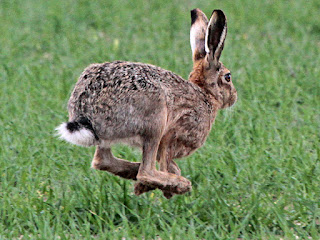Last Friday night scraped the bottom of the barrel with Brindled Pug and Early Grey, but a smallish slug on the bottom of the moth trap aroused my curiosity. Turns out it's a Netted Slug, but the biggest surprise is that this is supposed to be one of our commonest slugs yet it didn't look familiar to me at all. The first time I've identified one anyway.
Netted Slug, North Elmham, 22nd April
On Saturday morning in the Brecks some early sunshine got me a nice Common Oak Purple Dyseriocrania subpurpurella.
Common Oak Purple Dyseriocrania subpurpurella, Hockham Heath, 23rd April
I also caught this Brown Lacewing which provided me with my first opportunity to try out my newly-acquired key to Lacewings. It was Hemerobius humulinus, the first time I've identified a Brown Lacewing to species level.
Brown Lacewing Hemerobius humulinus, Hockham Heath, 23rd April
The Snails key also got its first use, although it wasn't the first time I've identified Brown-lipped and White-lipped Snails. Indeed in this case the key sent me in the wrong direction as the Brown-lipped Snail showed a substantial and completely unobscured umbilicus. Bad snail.
Some fungi caused me problems, as always. I think this one might be Birch Polypore...
Birch Polypore?, near Thompson Water, 23rd April
...but these white blobs on the side of a tree in a swamp made me wonder if there was a species related to King Alfreds Cakes, only white. Well if there is I can't find it in my books, and King Alfred's Cakes aren't supposed to be white even when they're young, so I've no idea what they were. Maybe they weren't even fungi? Ah, as I type this I've had an idea... slime mould maybe. Yes, that looks likely, perhaps Enteridium lycoperdon?
slime mould, perhaps Enteridium lycoperdon, Cranberry Rough, 23rd April
As a very novice botanist, Forget-me-nots are always a challenging group to identify. Hopefully they get easier with experience but I still struggle. I think these were Wood Forget-me-nots.
Wood Forget-me-not, Cranberry Rough, 23rd April
This Brown Hare tried to hide from me in the rain.
Brown Hare, Bodney, 23rd April
When I drew up beside it it soon changed its mind and ran away instead.
Brown Hare, Bodney, 23rd April
Another brief spell of sunshine in the garden after I got home produced what I assume was a Feathered Bright Incurvaria masculella in the Wysteria. It didn't stop long enough for me to get a good enough look to be 100% sure, but it's by far the most likely moth that looks anything like that. One insect that did pause long enough for a close examination was the hoverfly Eristalis arbustorum - the first time I've identified this common species.
Eristalis arbustorum, North Elmham, 23rd April
In the trap overnight there were just 2 Hebrew Characters but after Saturday the weather deteriorated even more and it felt more like January than late April. The moth catches shifted from being dreadful to non-existent. Three nights in a row without a single moth and for at least two of those not a single insect - not even a fly! Hate to think what effect this is having on insectivorous birds, especially resident ones that have already started breeding.
One moth (and one fly) in the trap on Wednesday night - a new one for the year too, Muslin Moth.
Muslin Moth, North Elmham, 27th April
Also on Wednesday I had my first opportunity to use another new key, the one on Woodlice - this is a Common Rough Woodlouse Porcellio scaber.
Common Rough Woodlouse Porcellio scaber, North Elmham, 27th April
Thursday night saw another (or perhaps the same) Muslin Moth and a Hebrew Character.














No comments:
Post a Comment